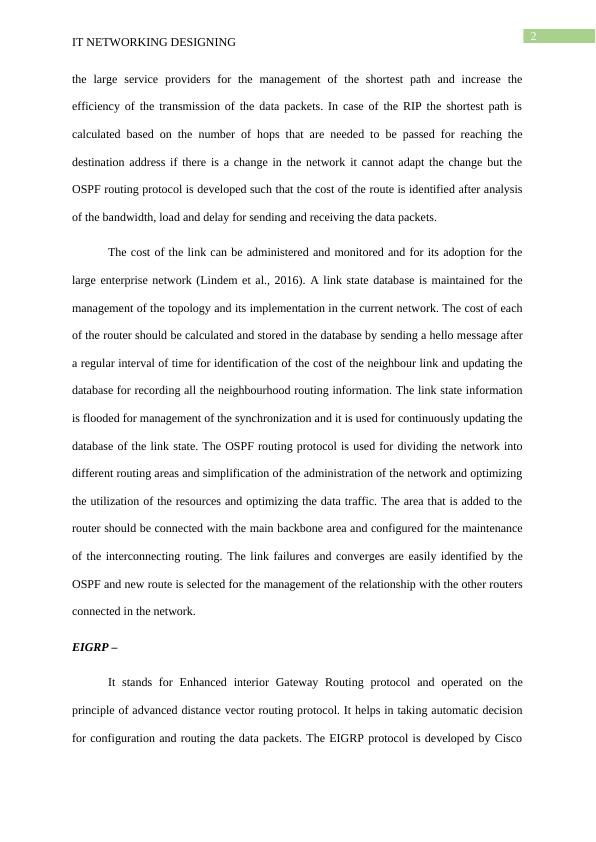IT Networking Designing
Describe Different Routing Protocols
6 Pages1399 Words381 Views
Added on 2023-06-09
About This Document
This article provides an overview of different routing protocols like RIP V2, OSPF, EIGRP, and BGP used for configuring routers and transmitting data packets in a network.
IT Networking Designing
Describe Different Routing Protocols
Added on 2023-06-09
ShareRelated Documents
End of preview
Want to access all the pages? Upload your documents or become a member.
Router’s Working Principle Under RIP and OSPF Protocols
|5
|1007
|31
Introduction to Routing Protocols
|2
|982
|128
Internetworking: Revision Questions Answers
|4
|1404
|14
TCP/IP Networking: Research, Configuration, and Services
|17
|1039
|169
Networking Project - Technical Solution, Features, Evaluation
|7
|1570
|298
Network traffic Assignment PDF
|5
|1189
|38



